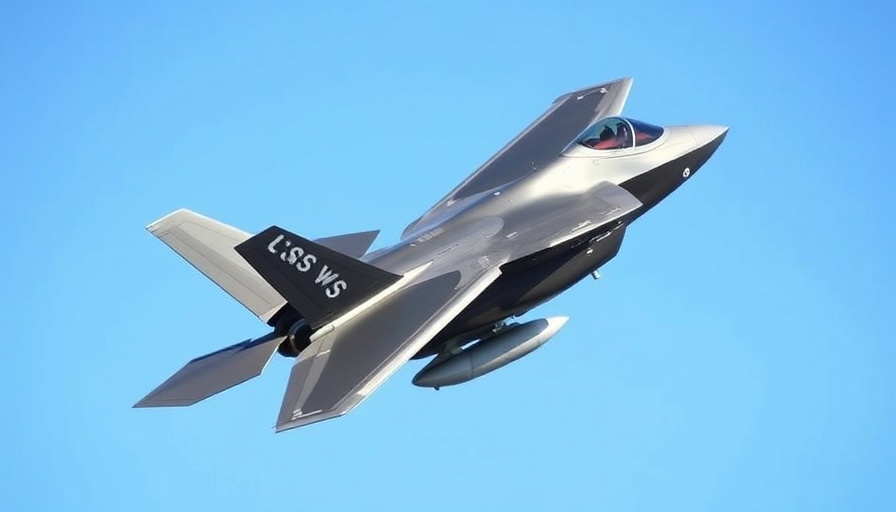
The Game-Changing Role of Drones in Modern Warfare
The recent test of the Lockheed Martin F-35A using the PDW C100 drone marks a significant leap forward in military tactics. This pioneering event demonstrates how drone technology can complement traditional air power, ensuring safer operations for combat pilots and ground forces alike. The integration of small unmanned aerial systems (UAS) into strike missions is reshaping the battlefield landscape, allowing for precision without the heavy risk of detection.
Drones Enhance Tactical Flexibility and Precision
The PDW C100 drone's performance was commendable, showcasing the future of joint fires capabilities on the battlefield. The drone served effectively as a laser designator, guiding four precision bombs with remarkable accuracy. With its operational range extending up to 10 kilometers and an impressive endurance of 74 minutes, the C100 represents a leap in tactical capabilities compared to older models like the RQ-7B Shadow, which it replaces.
Stealth Operations Without Compromising Safety
Traditionally, laser-guided bombs necessitate either the presence of another manned aircraft or exposed ground troops to mark objectives, which could jeopardize their safety. The PDW C100 allows the F-35 to maintain its stealth profile while still executing effective strikes, ensuring crew safety amid hostile radar environments. As noted by PDW CEO Ryan Gury, this system enhances operational safety by facilitating standoff range targeting.
Broader Implications for Military Doctrine
This demonstration isn't just about technology; it signifies a transformation in military doctrine regarding close air support. With drones like the C100, the military can now approach complex operational environments with more agility. Instead of deploying low-flying aircraft subject to enemy fire, troops can utilize drones from a safe distance to complete missions, thus reshaping traditional tactical frameworks.
Adaptation and Future Prospects
The adaptation of the PDW C100 by the U.S. Army’s 173rd Airborne Brigade underscores the growing acceptance of drone technology within military ranks. As soldiers experiment with various drone capabilities—from supply drops to autonomous missions—their feedback will shape future enhancements for both the C100 and other drone systems. The potential for these drones extends beyond military applications, with possibilities for humanitarian aid and disaster relief missions.
Conclusion: The Future of Warfare is Unmanned
As we reflect on the results of the F-35A's test with the PDW C100, one thing is clear: the fusion of manned and unmanned systems is setting a new standard in warfare. This approach not only maximizes precision in military operations but also minimizes risk to human lives. The future trajectory of defense technologies will likely see even greater reliance on UAS, reshaping how wars are fought and won.
 Add Row
Add Row  Add
Add 




Write A Comment